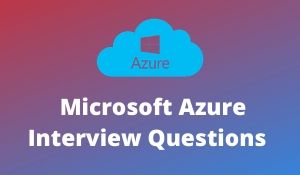
What is Azure Cloud Service?
By creating a cloud service, you can deploy a multi-tier web application in Azure, defining multiple roles to distribute processing and allow flexible scaling of your application. A cloud service consists of one or more web roles and/or worker roles, each with its own application files and configuration. Azure Websites and Virtual Machines also enable web applications on Azure. The main advantage of cloud services is the ability to support more complex multi-tier architectures
What is a cloud service role?
A cloud service role is comprised of application files and a configuration. A cloud service can have two types of roles.
What is link a resource?
To show your cloud service’s dependencies on other resources, such as an Azure SQL Database instance, you can “link” the resource to the cloud service. In the Preview Management Portal, you can view linked resources on the Linked Resources page, view their status on the dashboard, and scale a linked SQL Database instance along with the service roles on the Scale page. Linking a resource in this sense does not connect the resource to the application; you must configure the connections in the application code.
What is scale a cloud service?
A cloud service is scaled out by increasing the number of role instances (virtual machines) deployed for a role. A cloud service is scaled in by decreasing role instances. In the Preview Management Portal, you can also scale a linked SQL Database instance, by changing the SQL Database edition and the maximum database size, when you scale your service roles.
What is a web role?
A web role provides a dedicated Internet Information Services (IIS) web-server used for hosting front-end web applications.
What is a worker role?
Applications hosted within worker roles can run asynchronous, long-running or perpetual tasks independent of user interaction or input.
What is a role instance?
A role instance is a virtual machine on which the application code and role configuration run. A role can have multiple instances, defined in the service configuration file.
What is a guest operating system?
The guest operating system for a cloud service is the operating system installed on the role instances (virtual machines) on which your application code runs.
What is a cloud service components?
Three components are required in order to deploy an application as a cloud service in Azure:
What are deployment environments?
Azure offers two deployment environments for cloud services: a staging environment in which you can test your deployment before you promote it to the production environment. The two environments are distinguished only by the virtual IP addresses (VIPs) by which the cloud service is accessed. In the staging environment, the cloud service’s globally unique identifier (GUID) identifies it in URLs (GUID.cloudapp.net). In the production environment, the URL is based on the friendlier DNS prefix assigned to the cloud service (for example, myservice.cloudapp.net).
What is swap deployments?
To promote a deployment in the Azure staging environment to the production environment, you can “swap” the deployments by switching the VIPs by which the two deployments are accessed. After the deployment, the DNS name for the cloud service points to the deployment that had been in the staging environment.
What is minimal vs. verbose monitoring?
Minimal monitoring, which is configured by default for a cloud service, uses performance counters gathered from the host operating systems for role instances (virtual machines). Verbose monitoring gathers additional metrics based on performance data within the role instances to enable closer analysis of issues that occur during application processing. For more information
What is a service definition file?
The cloud service definition file (.csdef) defines the service model, including the number of roles.
What is a service configuration file?
The cloud service configuration file (.cscfg) provides configuration settings for the cloud service and individual roles, including the number of role instances.
What is a service package?
The service package (.cspkg) contains the application code and the service definition file.
What is a cloud service deployment?
A cloud service deployment is an instance of a cloud service deployed to the Azure staging or production environment. You can maintain deployments in both staging and production.
What is Azure Diagnostics?
Azure Diagnostics is the API that enables you to collect diagnostic data from applications running in Azure. Azure Diagnostics must be enabled for cloud service roles in order for verbose monitoring to be turned on.
What is Azure Service Level Agreement (SLA)?
The Azure Compute SLA guarantees that, when you deploy two or more role instances for every role, access to your cloud service will be maintained at least 99.95 percent of the time. Also, detection and corrective action will be initiated 99.9 percent of the time when a role instance’s process is not running.
What is Cloud Computing?
Cloud computing is the use of computing resources (hardware and software) that are delivered
as a service over a network (typically the Internet).
What are the Service Model in Cloud Computing?
Cloud computing providers offer their services according to three fundamental models: Infrastructure as a service (IaaS), platform as a service (PaaS), and software as a service (SaaS) where IaaS is the most basic and each higher model abstracts from the details of the lower models.
How many types of deployment models are used in cloud?
There are 4 types of deployment models used in cloud:
Public cloud
Private cloud
Community cloud
Hybrid cloud
What is Windows Azure Platform?
A collective name of Microsoft’s Platform as a Service (PaaS) offering which provides a programming platform, a deployment vehicle, and a runtime environment of cloud computing hosted in Microsoft datacenters.


